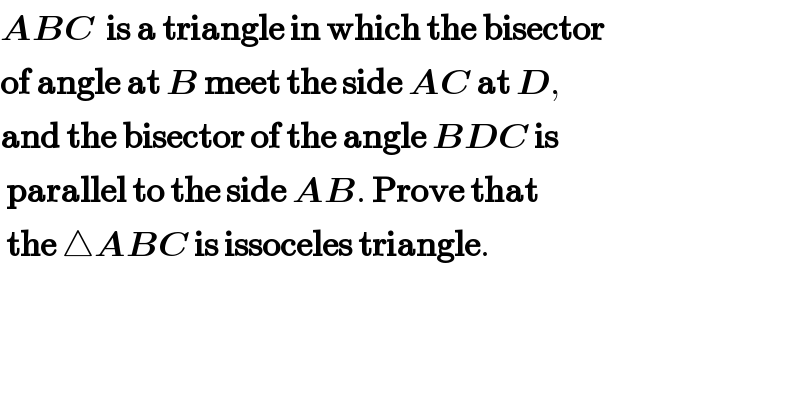
Question and Answers Forum
Question Number 169145 by MathsFan last updated on 24/Apr/22

Answered by som(math1967) last updated on 25/Apr/22
![let bisector of ∠BDC meet the side BC at E ∠ABD=∠DBE=α [BD bisector] ∠ABD=∠BDE [alternate ] ∠BDE=∠EDC=α [DE bisector] AB∥DE ∴ ∠EDC=∠BAC=α AC=b,AB=c, BC=a ∴ (a/(sinα))=(b/(sin2α)) ⇒(a/(sinα))=(b/(2sinαcosα)) ⇒cosα=(b/(2a)) ⇒((b^2 +c^2 −a^2 )/(2bc))=(b/(2a)) ⇒b^2 a+c^2 a−a^3 −b^2 c=0 ⇒b^2 (a−c) −a(a^2 −c^2 )=0 ⇒(a−c)(b^2 −ac−a^2 )=0 a−c=0 ⇒a=c triangle is isoscale](Q169152.png)
Commented by som(math1967) last updated on 25/Apr/22

Commented by som(math1967) last updated on 25/Apr/22

Commented by MathsFan last updated on 25/Apr/22

